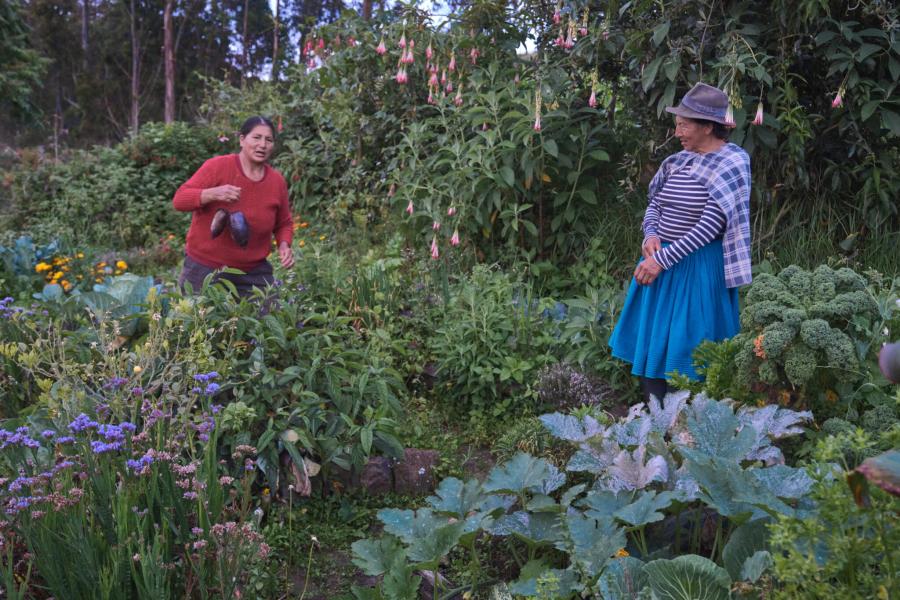Tourism and prosperity are generally seen to go hand in hand. The prosperous tourist has surplus funds for food, clothing, lodging, travel and material goods. Tourism is also thought to bring prosperity to host communities - stimulating the local economy in providing employment, improving facilities and services for natives as these are provided for the visitor, and generally enhancing local welfare.
Tourism is thought to benefit underdeveloped regions - whether in the Third World or in peripheral pockets within developed nations. Jobs created by tourism can often be filled by relatively unskilled workers who provide personal services for the visitors. Development of tourism prevents development of more hard industry. The very lack of an infrastructure suitable for industrialism that permits the persistence of an ambience perceived as 'quaint,' 'colorful,' 'primitive,' 'exotic,' and 'relaxed' - in short, exactly the type of setting where one can go 'to get away from it all.'
The success of touristic ventures, however, creates major problems. For one thing, most rural areas are incapable of carrying high density populations without undergoing dramatic alteration. Yet tourism development encourages many outsiders to move into these areas to manage the industry.
Small, indigenous populations are easily swamped when several busloads of tourists arrive or when a cruise vessel pulls into the harbor.
PHONY FOLK
The pre-tourism lifestyle of local residents is usually modest. When visitors descend, however, they require numerous amenities to recreate aspects of their homelife. This leads to rising expectations and new lifestyles among the locals. Ironically, it may also lead to a decline in tourism as visitors find that the locale no longer offers unique attractions.
In order to maintain or increase the flow of tourist monies, a contrived and artificial 'folk culture' is frequently staged. It may even be invented as locals respond to the expectations of visitors. Townspeople will invent a 'traditional blessing of the fleet' to attract visitors; and 'old town' will be newly built (complete with hired locals dressed in the costumes of some archaic and often mythical 'olden times'); new 'folk crafts' will be designed and taught to the natives by outsiders. The American Southwest Indians, for example, discovered that travelers frequently bought their more crudely made pottery because those "looked more handmade and authentic' than the more perfectly fashioned items. They began to manufacture such pots deliberately; few kept the old standards.
In North America, Indian communities are among the most popular tourist attractions. Every year, hundreds of thousands of tourists visit Indian locales to watch tribal dances, participate in pow-wows, buy 'genuine' Indian pots, arrowheads, blankets, and beaded belts or hand-fashioned jewelry. They have their photographs taken near totem poles, wooden Indians, or tepees (built and functioning only for this purpose). Despite the availability of quality goods, the most popular items are still cheap, factory-made artifacts and toy replicas, garishly and conspicuously labeled with cues such as 'Souvenir of Wank-a-tanka Indian Village' (e.g., Indian dolls made of plastic and still bearing easily removable labels that say 'Made in Taiwan').
ECONOMIC IMPACT
What is the impact of tourism on Indian communities and individuals? It would be in error to generalize since both individuals and communities differ sharply in the degree to which they are accessible to outsiders, their economic vulnerability, and the need (thus the desire) to encourage tourism. The Kaibab Paiutes of northern Arizona have established an on-reservation tourism facility and have maintained control over its development.
A more depressing, bleak, and typical kind of tourism affects the Eastern Cherokee of North Carolina. Here the major share of tourism profits go to non-Indians who own or manage the income-producing facilities. During the six winter months, even the small income tourists do bring to the Cherokee disappears:…
This cyclical economy forces many people to go on welfare to survive me winter...and has an unfortunate effect on the emotional stability of many Cherokees. Six months of frantic activity with exposure to American standards of affluence followed by six months of isolation and dependency do not constitute a wholesome life.
Most Cherokees whose jobs depend on tourists work in low-paid capacities as cooks, maids, or shop assistants. About 25 or 30 males are self-employed in the colorful business of "chiefing." These men dress in pan-Indian garb and post themselves in front of the tourist shops as an attraction. They specialize in having their pictures taken and businessmen are happy to have the "chiefs" there, for they attract customers...Tourists seem willing to accept the vulgar Indian stereotype the "chiefs" present for it fits in with their own preconceived ideas of what an Indian is.
For many of the 'chiefs,' 'princesses' and troupes of dancers (who perform in such ad hoc locales as motel parking lots), tips are a major source of cash income other than welfare monies.
GROWTH OF TOURISM
Another important factor in determining the extent of tourism's impact is the suddenness with which it is introduced and grows. A slow increment of visitors over the decades gives tribes a chance to acquire gradually a relatively sophisticated understanding of tourism's problems and benefits - and how to manage both on a community basis.
This stands in sharp contrast to the drama now unfolding in the northern part of the United States and Canada where many native groups are currently being introduced to tourism. The number of visitors, alterations in the environment, and resulting crises multiply almost monthly. In the Northwest Territory, in the McKenzie District around the Great Slave Lake, the number of tourists increased from under 4,000 in 1963 to over 20,000 in 1970. Yet, as in most of Canada's sub-Arctic, the natives have been forced to deal with this explosion of people with relatively little assistance from either the provincial or national governments.
For many of the Canadian Inuit of the Arctic there was little or no information with which to evaluate the impact of the development of tourism before it was upon them. They were not consulted and had no voice in the process; as is so often the case, the industry 'just grew' as a result of outside entrepreneurial activity. The result is that their lives and their livelihoods have been seriously disrupted by outsiders and the new economy these are creating.
Yet the impact of tourism, even under the most regulated conditions, extends far beyond the local community and its residents. Worse, many of the regional consequences are not immediately visible - and, by the time they are, the indigenous population has become so dependent on tourism they cannot or will not work to reduce its presence.
Since many of the underdeveloped areas are environmentally suitable for low density populations only, the influx of visitors can play havoc with the resources of the area. Thus, in addition to the direct impact of outsiders on the inhabitants, there is the shock that comes when a damaged and degraded habitat becomes incapable of providing a living independent of the income brought by tourists.
ENVIRONMENTAL PRESSURES
In the Southwest, giant hotels use more water in one month than a whole town and its hinterland formerly used in a year. Swimming pools are filled, emptied, cleaned, and filled again, consuming thousands of gallons of water each time; guests bathe - sometimes several times daily; linens and serving ware are washed; and spacious green lawns or gardens are continually watered to create a landscape never intended by nature. The result is that water for agricultural production is disappearing or becoming so costly that small farmers and ranchers cannot afford to sink deeper wells; they must give up their livelihood or struggle against increasing costs and declining production.
In the same region, hardly a weekend passes without a gathering of motorcyclists. They gather to hold rallies in what they perceive as 'empty space'. The damage that can be inflicted by several hundred cyclists on one of the most fragile econiches known to man is incalculable.
Tourists who visit the mountains inflict similar havoc. The most dangerous time for dry forests coincides with the height of the summer camping season. Thousands of acres of woods are burned annually in the devastating forest fires often caused by careless tourists who leave camp sites with hearths smouldering or, driving through, simply toss lighted cigarettes or knock pipe ashes from car windows.
Tourism is also behind a more subtle conflict in the region. Since the Spanish conquest in the 17th century, there has been a traditional hostility between Indians and Hispanics. The local situation is growing increasingly tense as Indians watch Spanish landowners 'get rich selling what was once Indian land to Anglo tourists' - and Spanish envy 'the protected reservations of the Indians which remain immune from the same economic pressures to sell.' Each sees the other benefiting at his expense and in ways denied him,
Many communities, when given a choice between industrialism or tourism, will opt for the latter on the grounds that it is less destructive of the habitat and the local lifestyle. Yet often industrial development is regulated far more stringently than tourism.
Often, tourism is promulgated by government officials who are more concerned with improving the local economy and attracting foreign currency than with protecting indigenous peoples. The elegant and spectacular tourist development at Cancun, Yucatan has been strongly supported by state and federal officials and was specifically designed to serve not only as a recreational attraction but as a convention center. Indigenous families of peasant farmers and fishermen have been displaced or employed in the service sector. Yachts now fill the numerous marinas, once reserved for local fishermen. In 1970 the population of the area was 426; by 1978 it was nearly 30,000.
SOCIAL EFFECTS
Tourism creates such special problems as psychological stress on women who fill a majority of the jobs in tourism; the teenagers who watch, alternately repelled and lured by the affluence and 'swinging lifestyle; of visitors; the elderly who are bewildered and dismayed as they see their world altered almost overnight.
Vaughan has argued that local residents benefit from lower retail prices as larger volumes allow economies of scale. My own research, however, suggests that the price of such basic items as food, clothing, and gas increases 10-20% during the high season. Simple tasks such as shopping, getting shoes repaired, or buying stamps, lead to lengthy delays and frustration. As residents rely more on tourist monies, they are more susceptible to irritants which tourism imposes. Hostility toward visitors is directly related to the ratio of tourists to locals. Increasingly, studies show that tourism causes crime, burglaries and rape, in particular, to increase.
In some cases expenditures to service the visitors (e.g., increased staffing of public areas such as parks; additional medical, police and fire personnel) cost more than the tourists' economic input. The problems become even more acute when the tourist economy is controlled by outside entrepreneurs and a major part of the economic benefits are syphoned from the region. Underdeveloped areas often provide consumer goods and personnel services for tourism while the urban, more developed regions control planning and management and consequently reap the bulk of the economic benefits. Rather than having government take a stronger role in planning, managing and overseeing such development, the local population should be involved. In this way tourism can serve the basic needs of the local people; and outside interests cannot use the human and natural resources for their own profit, leaving the local region poorer than before.
Tourism need not have the detrimental effects that so often accompany it. North American Indian communities' successes and failures with tourism suggest that, given time to prepare adequately and to control as well as to monitor at the local level, tourism can be beneficial.
Article copyright Cultural Survival, Inc.



